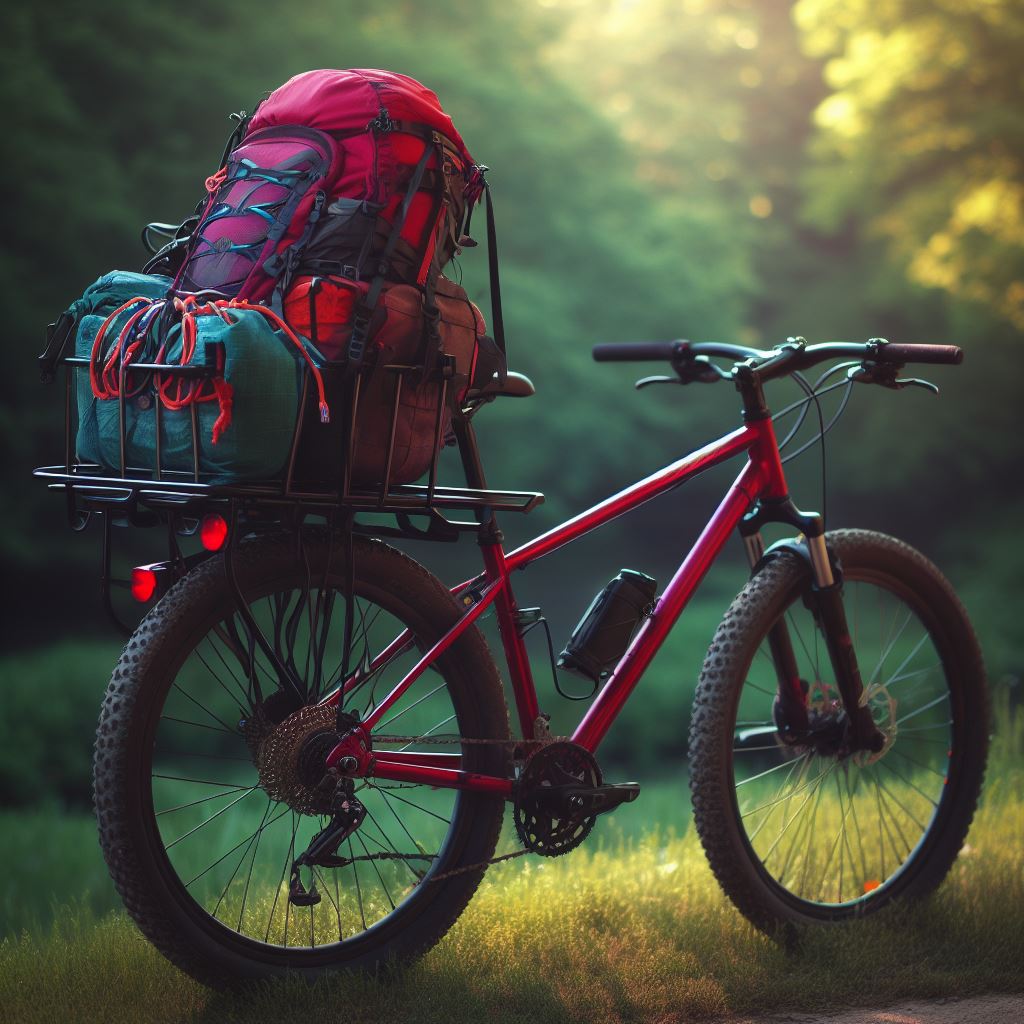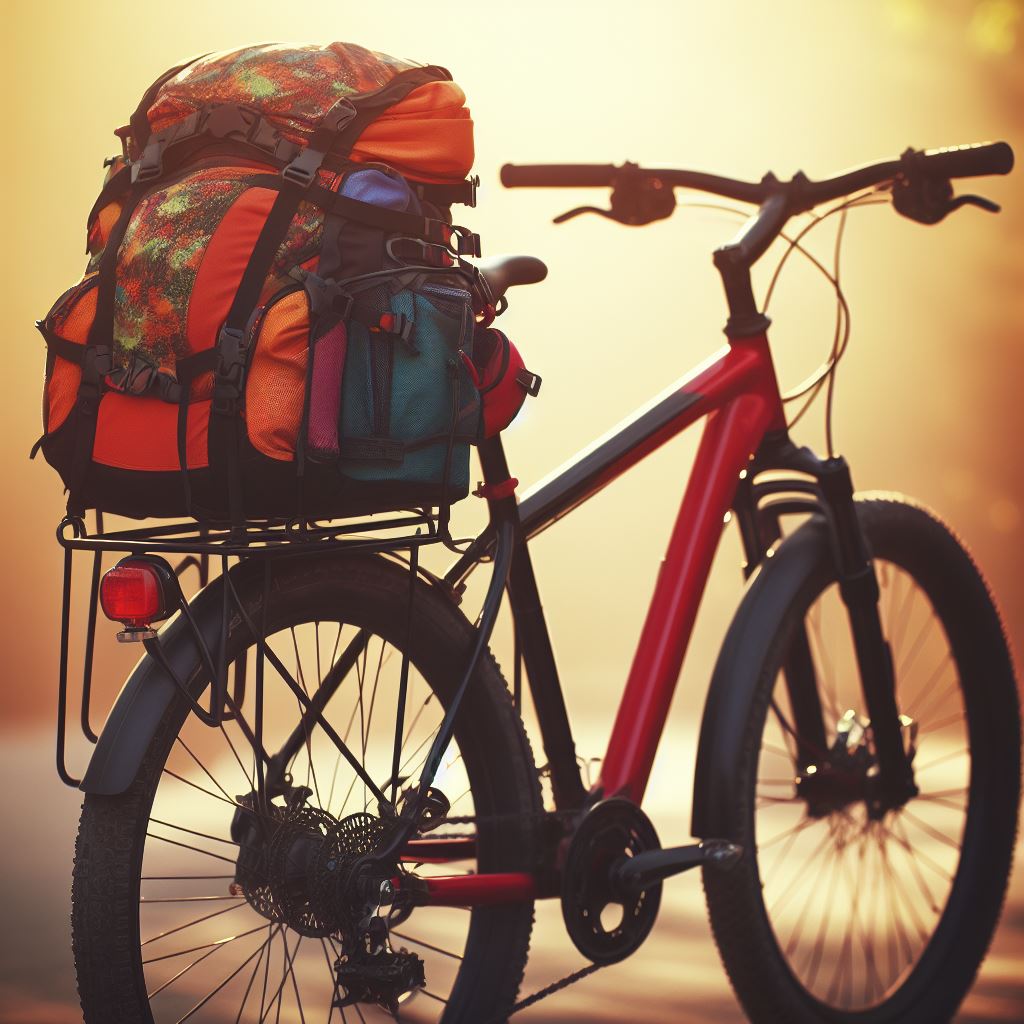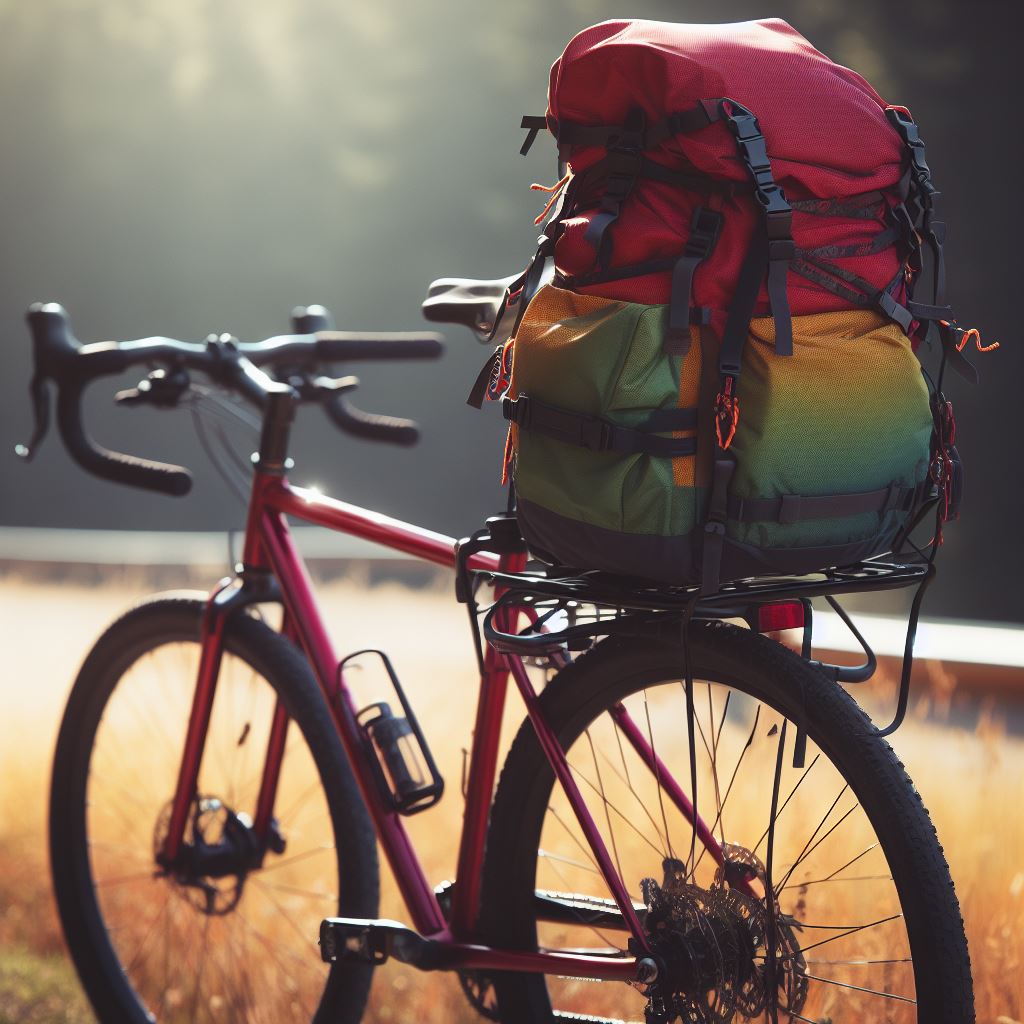Success alert mTo attach a backpack to a rear bike rack, first, locate the straps or loops on the backpack that are designed for securing it to the rack. Then, position the backpack onto the rack with the straps or loops aligned with the rack’s fastening points, and securely fasten them in place.
Carrying a heavy backpack while riding a bicycle can be uncomfortable and affect your balance. Attaching your backpack to a rear bike rack allows you to transport your gear safely and comfortably. This article will teach you how to securely mount your backpack on your bike’s rear rack.
Riding with a backpack attached to your bike’s rear rack keeps the weight off your back so you can ride further and faster. It also lowers your center of gravity for better bike handling. Read on to learn the best practices for carrying a backpack on a bike rack.
Make sure the backpack is balanced and tightly secured to prevent it from shifting during a ride.

Preparing The Backpack And Bike Rack
To attach a backpack to a rear bike rack, follow these simple steps: secure the backpack with adjustable straps or bungee cords, ensuring a tight and secure fit; evenly distribute the weight of the backpack to prevent instability while riding; double-check all attachments before setting off.
Enjoy a hassle-free cycling experience with your essentials comfortably stowed.
Before embarking on your biking adventure, it’s important to ensure that your backpack is securely attached to your rear bike rack. This not only provides convenience and ease of transportation but also prevents unnecessary strain on your body while riding. In this section, we will discuss the essential steps for preparing your backpack and bike rack for a seamless and comfortable journey.
Choosing The Right Backpack
When selecting a backpack for biking, it’s crucial to choose one that is compatible and suitable for attaching to a bike rack. Look for backpacks specifically designed for biking, as they often come with adjustable straps and attachments to secure the backpack firmly to the rack. Additionally, consider the size and capacity of the backpack to ensure it can accommodate all your essentials without compromising balance.
Inspecting The Bike Rack
Prior to attaching your backpack, it’s important to conduct a thorough inspection of your bike rack. Check for any signs of damage, loose screws, or misalignment that may affect the stability of the backpack while in motion. Ensure that the rack is securely attached to your bike frame and that it can bear the weight of your backpack without compromising your safety and comfort.
In addition to inspecting the overall condition of the rack, pay attention to the specific attachment points where the backpack will be secured. These attachment points should be free from any obstructions or damage that may hinder the proper fastening of your backpack straps. Remove any debris or foreign objects that might interfere with the attachment process.
| Item | Checklist |
|---|---|
| Screws and Bolts | Check for tightness and ensure there are no missing or damaged fasteners. |
| Rack Alignment | Ensure the rack is straight and parallel to the ground, avoiding any tilting or misaligned components. |
| Attachment Points | Inspect the attachment points for any signs of wear, damage, or obstruction that may interfere with proper attachment. |
By thoroughly inspecting your bike rack, you can be confident in its stability and effectiveness in securely holding your backpack throughout your biking journey.
Once you have chosen the right backpack and inspected your bike rack, you are ready to move on to the next step of attaching your backpack to the rack. By following these preparatory steps, you can ensure a safe, comfortable, and enjoyable biking trip with all your essentials securely fastened to your bike.

Securing The Backpack To The Rear Bike Rack
When it comes to cycling with a backpack, securing it properly to the rear bike rack is essential for a safe and comfortable ride. There are several methods you can use to attach your backpack securely to the rear bike rack, including bungee cords, Velcro straps, and adjustable compression straps. In this article, we will walk you through each method step by step, so you can choose the one that suits you best. Let’s explore how to secure your backpack to the rear bike rack using these three options: attaching the bungee cord, using Velcro straps, and using adjustable compression straps.
Attaching The Bungee Cord
A bungee cord is a versatile and adjustable tool that can be used to secure your backpack to the rear bike rack. Here’s how you can use it:
- Step 1: Place your backpack on the rear bike rack.
- Step 2: Take a bungee cord and wrap it around your backpack and the bike rack frame.
- Step 3: Adjust the tension of the bungee cord to ensure a snug fit, but not too tight that it restricts your movement.
- Step 4: Double-check that the bungee cord is securely attached and won’t come loose during your ride.
Using Velcro Straps
Velcro straps offer another simple and effective way to secure your backpack to the rear bike rack. Follow these steps to use Velcro straps:
- Step 1: Place your backpack on the rear bike rack.
- Step 2: Wrap one end of the Velcro strap around the backpack and the other end around the rack.
- Step 3: Tighten the Velcro strap to ensure a secure hold on your backpack.
- Step 4: Repeat this process with additional Velcro straps if necessary for extra stability.
Using Adjustable Compression Straps
Adjustable compression straps are ideal for securing larger backpacks to the rear bike rack. Here’s how to use them:
- Step 1: Position your backpack properly on the rear bike rack.
- Step 2: Wrap the compression strap around your backpack and through the designated loops on the bike rack.
- Step 3: Pull the compression strap tight and fasten the buckle or clip securely.
- Step 4: Check that the compression strap is firm and secure, ensuring your backpack stays in place during your ride.
By using bungee cords, Velcro straps, or adjustable compression straps, you can secure your backpack to the rear bike rack with ease. Choose the method that suits your backpack’s size and your personal preference. Remember, a securely attached backpack will enhance your cycling experience by providing stability and peace of mind throughout your journey.

Tips For Ensuring A Secure Attachment
Looking to attach a backpack to a rear bike rack? Follow these simple tips for ensuring a secure attachment without any hassle.
Attaching a backpack to a rear bike rack can be a convenient way to transport your belongings while riding. However, it’s essential to ensure that the attachment is secure to prevent any accidents or items falling off during the journey. By following these simple tips, you can have peace of mind knowing that your backpack is safely fastened to your rear bike rack.
Balancing The Load
One of the most crucial aspects of attaching a backpack to a rear bike rack is balancing the load properly. This helps maintain stability and control while riding, preventing the bike from becoming lopsided or difficult to handle. To achieve a balanced load, distribute the weight evenly on both sides of the rack. Avoid placing heavier items on one side and lighter ones on the other, as this can throw off the bike’s balance.
Double-checking For Stability
Before embarking on your bike journey, it’s vital to double-check the stability of the backpack attachment. This step ensures that the backpack remains firmly in place, even when encountering bumps or uneven terrain. Start by inspecting the straps or hooks that secure the backpack to the rear bike rack. Make sure they are tightened properly and show no signs of weakness or wear. Additionally, verify that the backpack is securely fastened and doesn’t wobble or shift when gently tugged or pushed.
Testing The Backpack Attachment
To further ensure a secure attachment, it’s recommended to test the backpack before hitting the road. Take a short ride in a safe area to evaluate the stability and overall feel of the backpack. Check for any signs of looseness, shifting, or discomfort. If you notice any issues, stop and adjust the attachment accordingly. It’s always better to be safe than sorry when it comes to transporting your belongings on a bike.

Frequently Asked Questions Of How To Attach Backpack To A Rear Bike Rack?
How Do You Attach A Backpack To A Rear Bike Rack?
To attach a backpack to a rear bike rack, you can use bungee cords or straps specifically designed for this purpose. Simply secure the backpack to the rack tightly to prevent any movement while riding.
Can I Attach Any Type Of Backpack To A Rear Bike Rack?
Most backpacks can be attached to a rear bike rack as long as they have adjustable straps or loops that allow for easy attachment. However, it’s always a good idea to check the backpack’s compatibility with bike racks before making any modifications.
Is A Rear Bike Rack Necessary For Attaching A Backpack To A Bike?
While a rear bike rack isn’t necessary to attach a backpack to a bike, it does provide added convenience and stability. With a bike rack, you can securely fasten the backpack to the bike, allowing for a safer and more comfortable ride.
Conclusion
Attaching a backpack to a rear bike rack is a simple yet essential skill for any cyclist. By following these step-by-step instructions, you can ensure a secure and balanced load, allowing for a more comfortable and enjoyable ride. Remember to adjust the straps, distribute weight evenly, and double-check the attachments for a safe journey.
So grab your backpack, hop on your bike, and experience the convenience and freedom of biking with your essentials securely attached to your rear rack. Happy cycling!





Leave a Reply